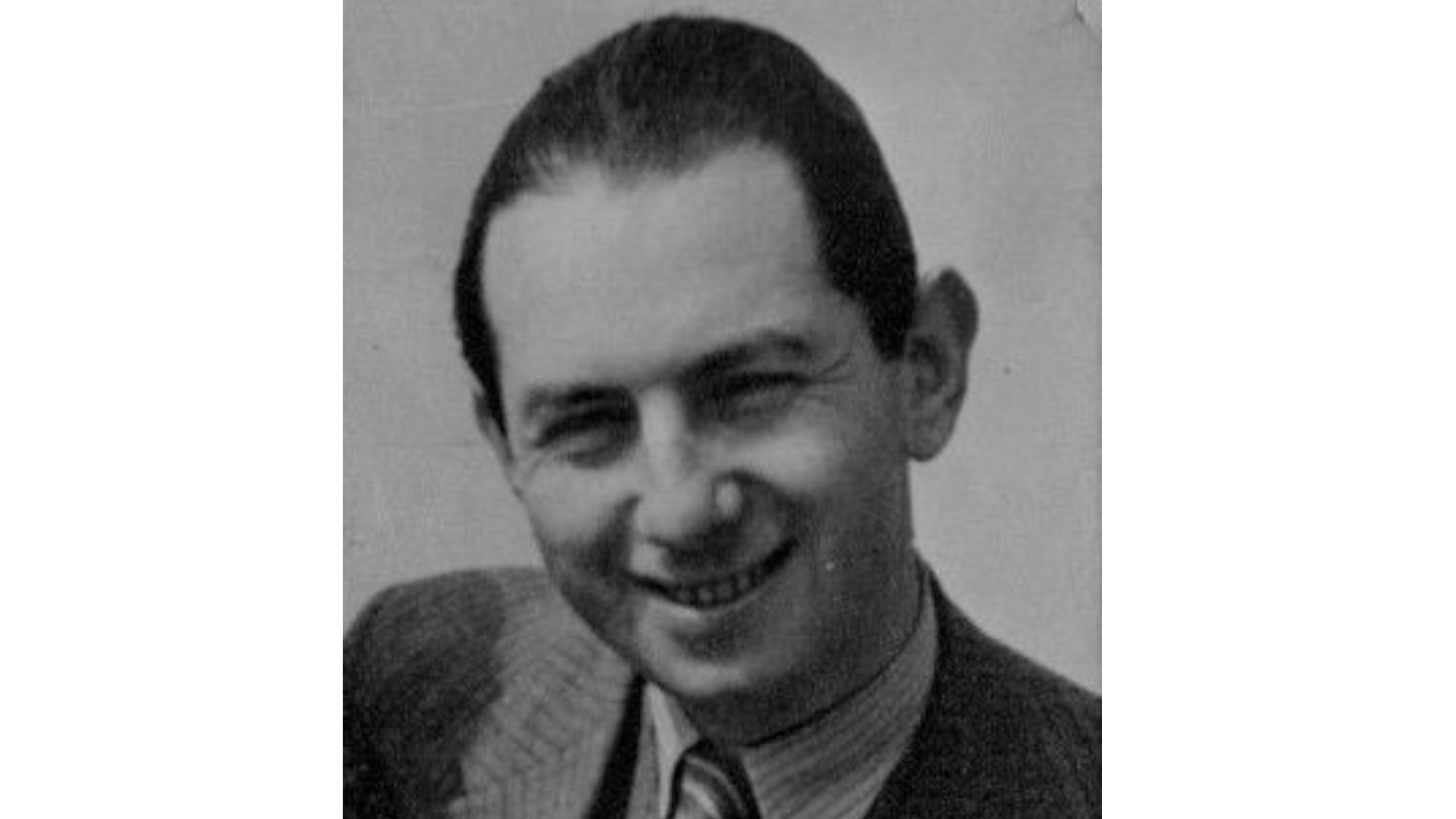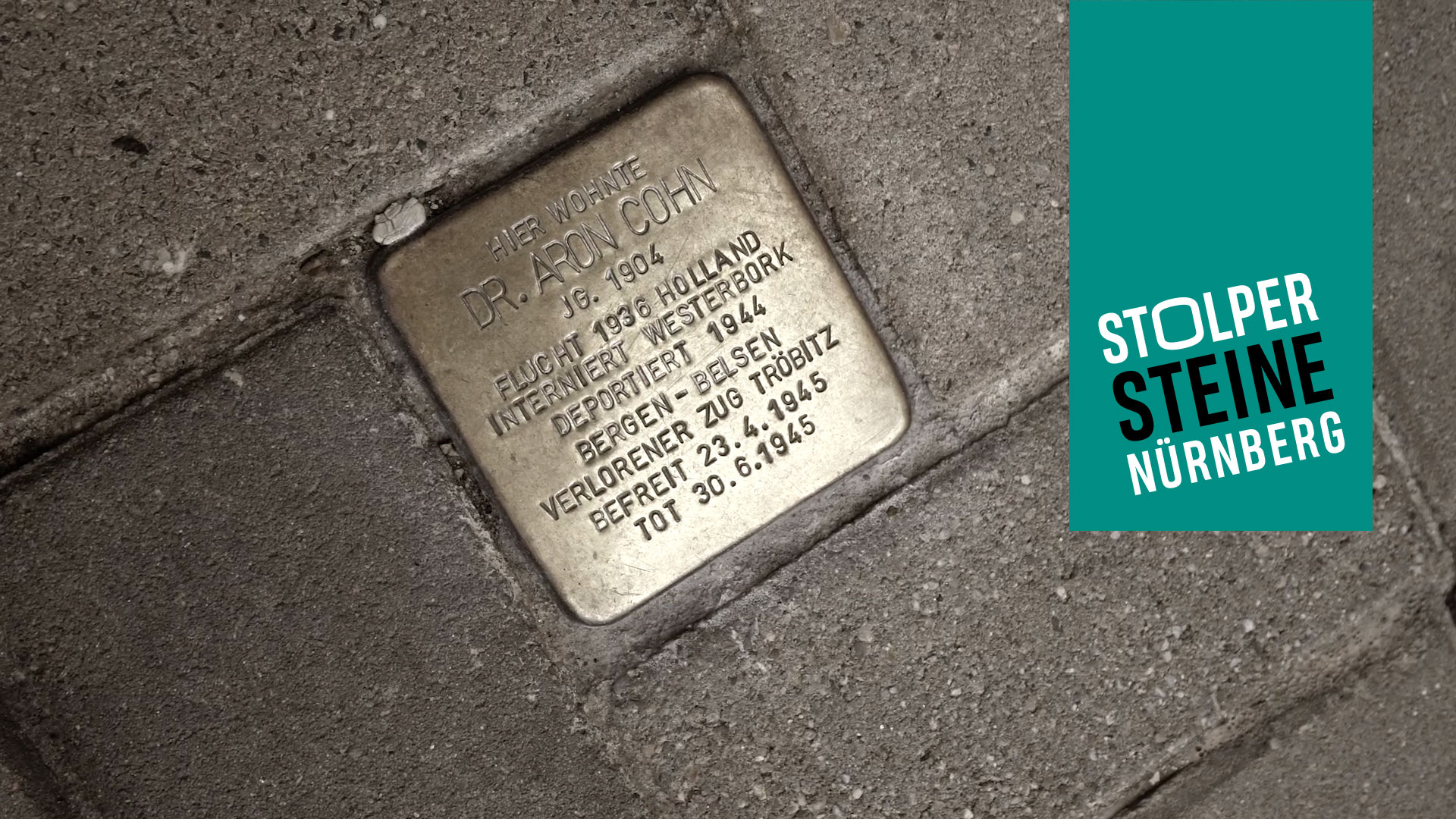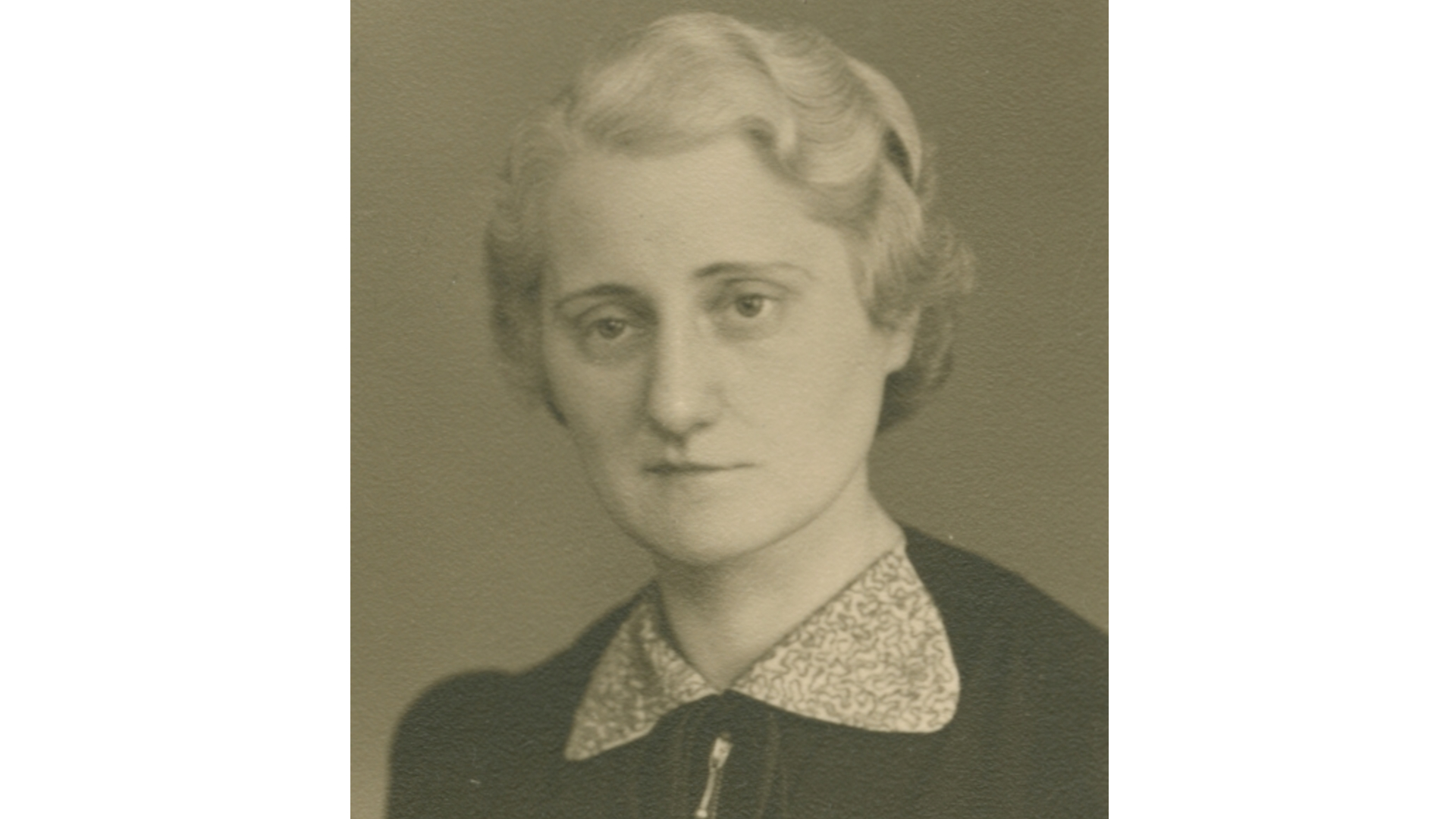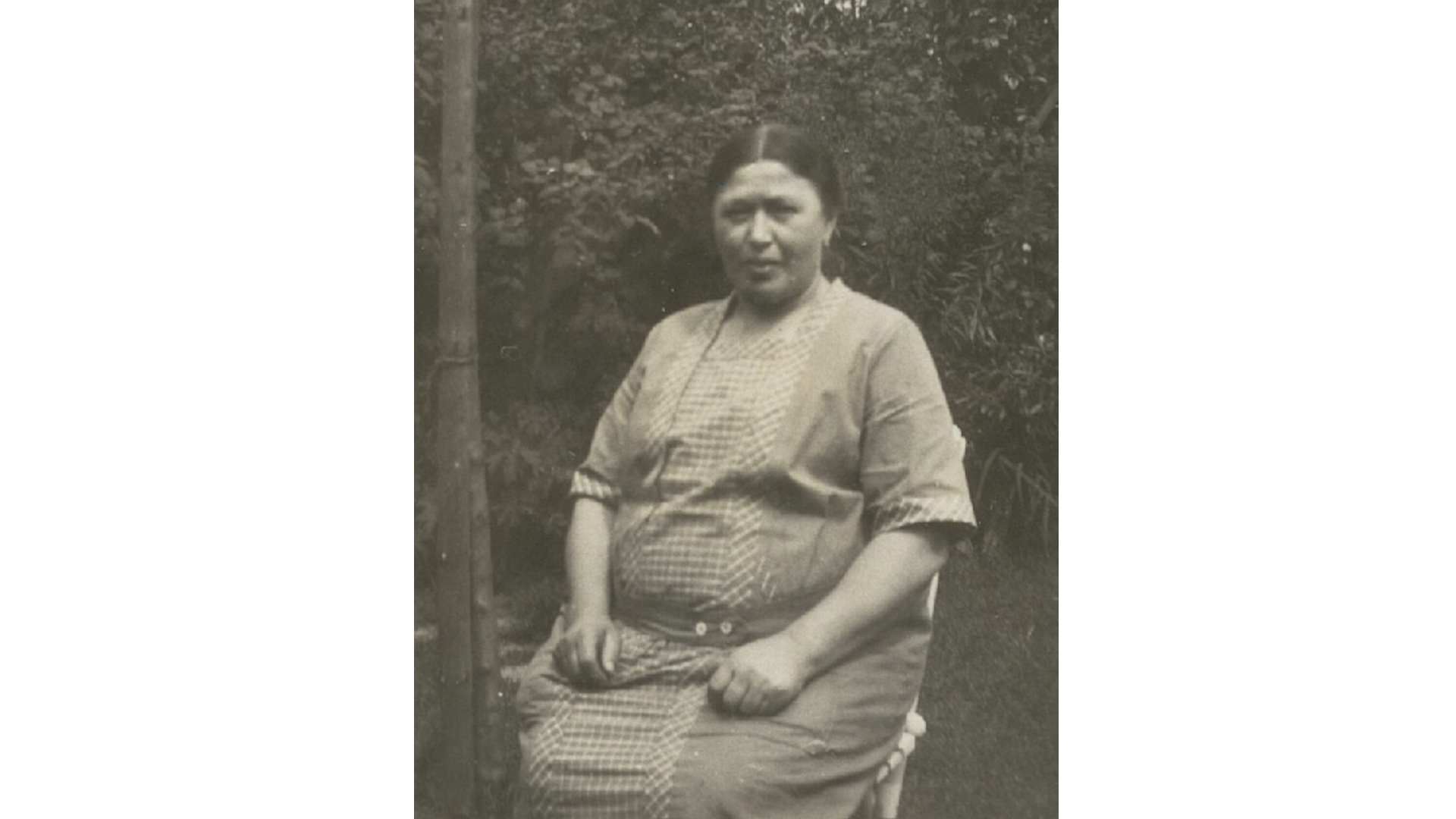| Location of stone: Willy-Brandt-Platz 8 (at that time Schlageterplatz 8) | District: Marienvorstadt |
| Sponsor: Ruth Reinecke | Laying of stone: 9 November 2018 |
Biography
On 9 November 2018, the 80th anniversary of the so called “Night of Broken Glass”, Gunter Demnig visited Nuremberg, to participate in a stumbling-stones ceremony. One of the stones Demnig laid on this day was for Aron Cohn. Dr Cohn had fled his native city to live in the Netherlands. There, he again fell into the hands of the National Socialist regime and did not survive the Holocaust. The project of laying a stumbling stone for him was initiated by Aron’s niece Ruth Reinecke.
Aron was born on 18 October 1904 in Nuremberg. His father Sally Cohn, originally from Thorn, had moved to Nuremberg in 1899 and set up a metalware business in the city. In July 1903 he married Gella Schwab in her home town Frankfurt am Main. The couple had three children: Aron, Leopold and Emma. Sally Cohn died from the Spanish Influenza on 29 February 1920.
Having completed his training as a trader, Aron later studied philosophy in Geneva, Vienna and then in Erlangen, obtaining his doctorate there in spring 1934. In May 1934 he moved to Prague, then in September to Paris and in September 1936 to Amsterdam, where he met Gitella Pels and her daughter Eva. They married in 1938.
On 20 June 1943 the family was deported to Westerbork concentration camp and in January 1944 to Bergen-Belsen concentration camp. Gitella died there on 2 April 1945, followed by Aron a few days later, on 15 April 1945. Only Eva survived.
At the time the stumbling stone was laid, it was believed that the circumstances surrounding Dr. Cohn’s death were as follows: as the Allies approached and the SS were clearing the camp, he was transported to Tröbitz in Brandenburg in a train (the “lost train”) and died there. This information has now been shown to be false.
- Biographical text from Ruth Reinecke, March 2021.
- Nuremberg City Archives, C 21/X No. 2 registration card.
- Nuremberg City Archives (ed.), Gedenkbuch für die Nürnberger Opfer der Schoa (Quellen zur Geschichte und Kultur der Stadt Nürnberg, vol. 29), Nuremberg 1998, p. 45.
- Nuremberg City Archives (ed.), Gedenkbuch für die Nürnberger Opfer der Schoa, supplementary volume (Quellen zur Geschichte und Kultur der Stadt Nürnberg, vol. 30), Nuremberg 2002, p. 9.









![[Translate to English:] [Translate to English:]](/fileadmin/Stolpersteine/Portraits/Dessauer_Kurt.jpg)
![[Translate to English:] [Translate to English:]](/fileadmin/Stolpersteine/Portraits/Dormitzer_Else.jpg)


